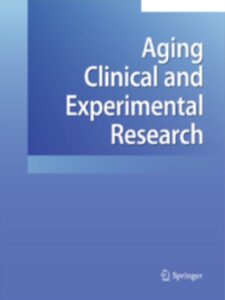Publications

Effect of virtual running with exercise on functionality in pre‐frail and frail elderly people: randomized clinical trial
Authors: Sara Molla‐Casanova 1, Elena Munoz‐Gomez 1, Nuria Sempere‐Rubio 1, Marta Ingles 1, Marta Aguilar‐Rodriguez 1, Alvaro Page 2, Juan Lopez‐Pascual 3, Pilar Serra‐Ano 1
Affiliations:
- UBIC Research Group, Department of Physiotherapy, Faculty of Physiotherapy, University of Valencia, GascoOliag, 5, Valencia, Spain
- Instituto Universitario de Ingenieria Mecanica y Biomecanica, Universitat Politecnica de Valencia, Camino de Vera s/n, 46022, Valencia, Spain
- Instituto de Biomecanica de Valencia, Universitat Politecnica de Valencia, Camino de Vera s/n, 46022, Valencia, Spain
Journal: Aging Clinical and Experimental Research - May 2023, Volume 35, Pages 1459-1467 (DOI: 10.1007/s40520-023-02414-x)
-
Field & Applications:
- Sport
- Clinical trial
- Treatment evaluation
- Gerontology / Ageing
- Muscle development / Performance
Background: Virtual mirror therapies could increase the results of exercise, since the mirror neuron system produces an activation of motor execution cortical areas by observing actions performed by others. In this way, pre-frail and frail people could use this system to reach an exercise capacity threshold and obtain health benefits.
Aim: The aim of this study is to evaluate the effects of a virtual running (VR) treatment combined with specific physical gait exercise (PE) compared to placebo VR treatment combined with PE on functionality, pain, and muscular tone in pre-frail and frail older persons.
Methods: A single blinded, two-arm, randomised controlled trial design was employed. Thirty-eight participants were divided into two intervention arms: Experimental Intervention (EI) group, in which VR and gait-specific physical exercises were administered and Control Intervention (CI) group, in which a placebo virtual gait and the same exercise programme was administered. Functionality, pain, and tone were assessed.
Results: EI group improved in aerobic capacity, functional lower-limb strength, reaction time, and pain, while CI group remained the same. Regarding static balance and muscle tone, no differences were found for either group. Further analysis is needed to asses VR effectiveness for improving gait, stand-up and sit-down performance and velocity.
Conclusions: Virtual running therapy appears to enhance capacities related with voluntary movements (i.e., aerobic capacity, functional lower-limb strength, and reaction time) and reduce pain.
Keywords: bodily illusion therapy, frailty, functionality, pain, tone
Based on all the foregoing, this study provides evidence that neuron system activation through VR therapy can improve voluntary movement-related capacities (i.e., aerobic capacity, functional lower-limb strength, and reaction time) and pain, while VR therapy has no effect on capacities and characteristics associated with involuntary movement (i.e., static balance and muscle tone and stiffness) in frail and pre-frail people.


